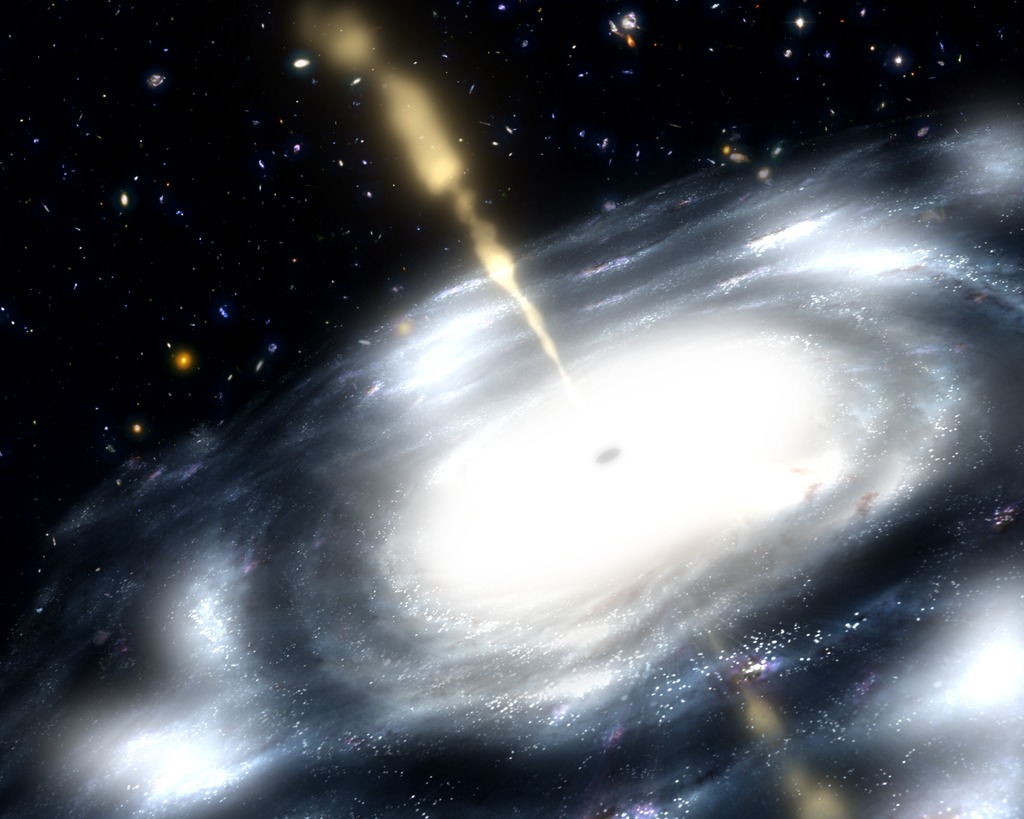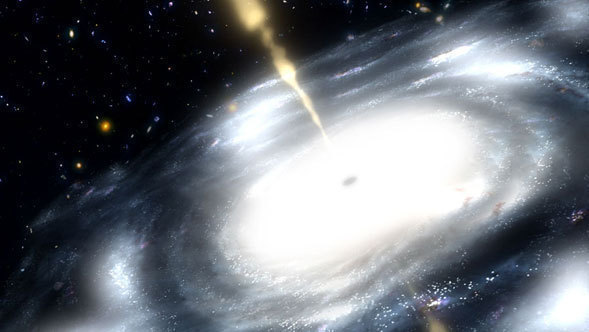
Credit: NASA/JPL-Caltech/ T. Pyle (SSC)
Artwork • December 14th, 2007 • sig07-026
sig07-026
This artist's rendition illustrates a rare galaxy that is extremely dusty, and produces radio jets. Scientists suspect that these galaxies are created when two smaller galaxies merge.
A few billion years after the Big Bang, astronomers suspect that small galaxies across the Universe regularly collided forcing the gas, dust, stars, and black holes within them to unite. The clashing of galactic gases was so powerful it ignited star formation, while fusing central black holes developed an insatiable appetite for gas and dust. With stellar nurseries and black holes hungry for galactic gas, a struggle ensued.
Scientists say this struggle for resources is relatively short-lived, lasting only 10 to 100 million years. Eventually, much of the gas will be pushed out of the galaxy by the powerful winds of newborn stars, stars going supernovae (dying in a cataclysmic explosion), or radio jets shooting out of central supermassive black holes. The removal of gas will stunt the growth of black holes by "starving'' them, and quench star formation.
They believe that these early merging structures eventually grew into some of the most massive galaxies in the Universe.
About the Object
- Name
- Type
- Galaxy > Activity > AGN
- Galaxy > Type > Spiral
- Galaxy > Size > Giant
- Distance
- 424 Light Years





